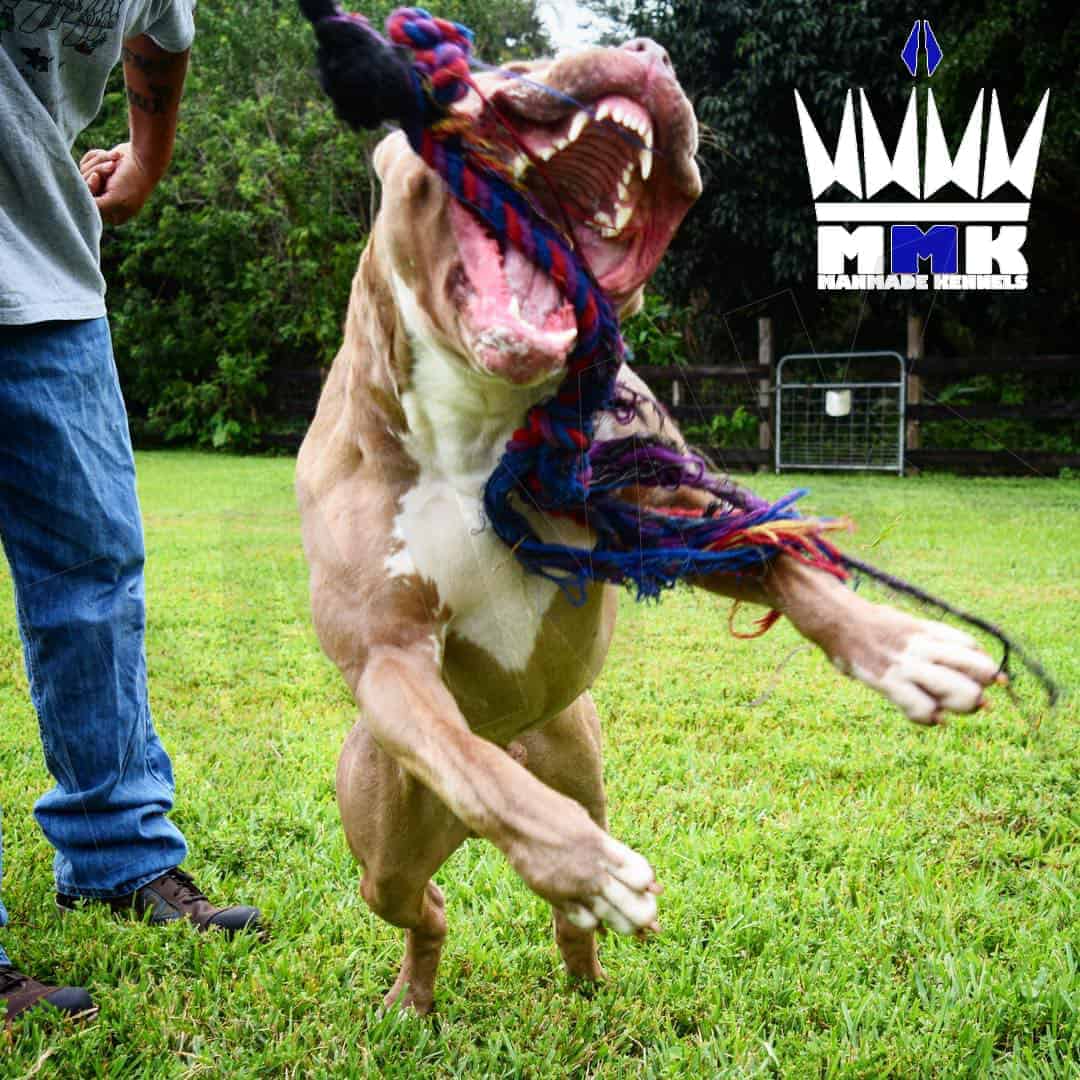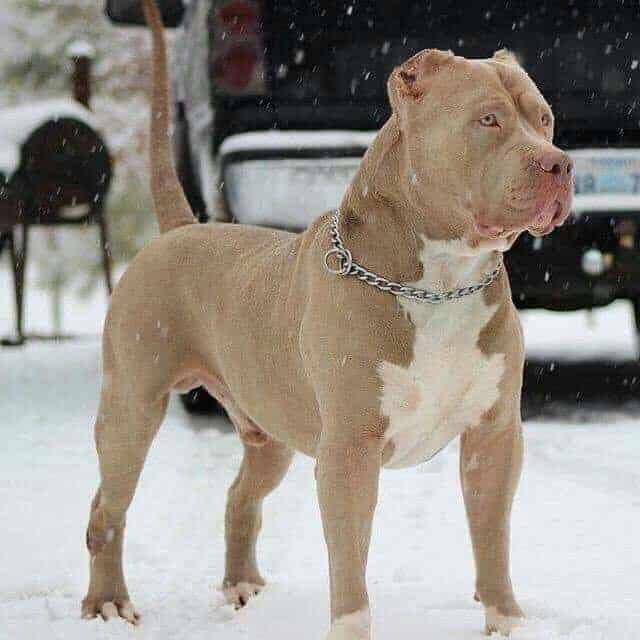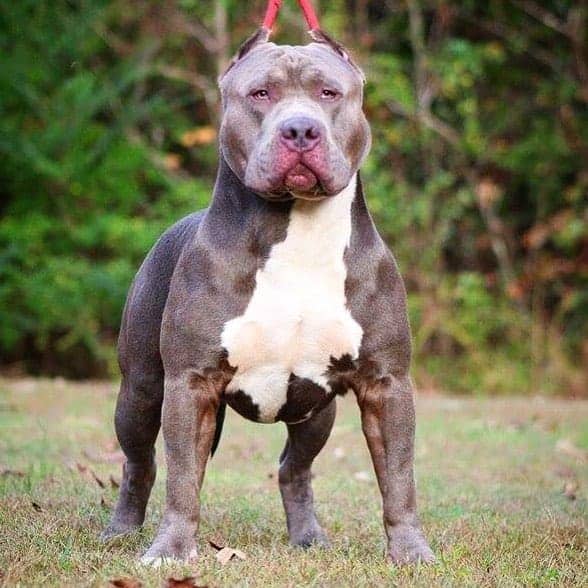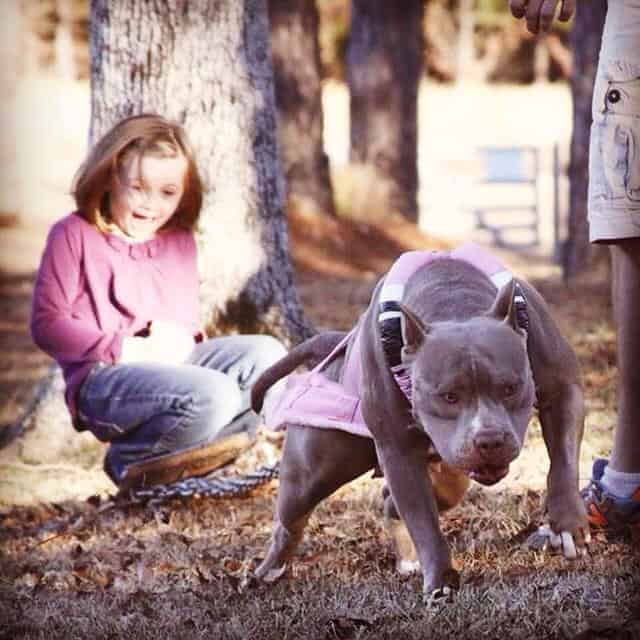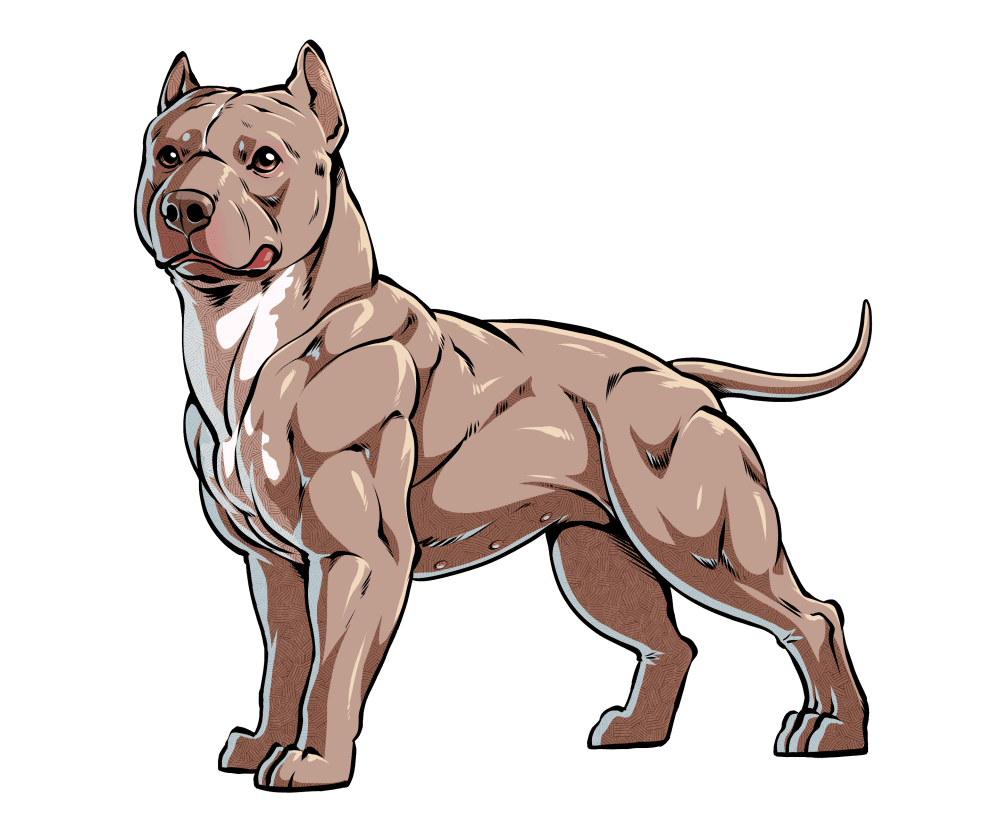Why Are There So Many Different Types of Red Nose and Blue Nose Pitbull Terriers?
Introduction
The world of red nose pitbulls and blue nose pitbulls has become increasingly complex, with a wide array of variations in size, shape, and appearance. This article aims to shed light on why there are so many different types of these popular pitbull varieties and what it means for potential owners. We’ll explore the origins of these color variations, the rise of designer breeds, and the importance of responsible breeding and ownership.
The Original Red Nose and Blue Nose Pitbulls
Traditionally, red nose pitbulls and blue nose pitbulls were simply color variations of the American Pit Bull Terrier breed. The red nose pitbull typically had a copper, red, or brown coat with a red or pink nose, while the blue nose pitbull had a blue, gray, or charcoal coat with a blue or gray nose. These color variations are the result of specific genetic combinations and do not indicate separate breeds or bloodlines. The original pitbulls were bred for their strength, agility, and determination, traits that are still valued in responsibly bred dogs today.
Key Characteristics of Traditional Pitbulls:
- Medium-sized, muscular build
- Short, smooth coat
- Strong, athletic physique
- Friendly and loyal temperament
- High energy levels and need for regular exercise
- Strong-willed nature requiring consistent training
- Excellent agility and strength
The Rise of Designer Pitbulls
In recent years, there has been a surge in the number of “designer” pitbulls, including various types of red nose and blue nose pitbulls. This trend is driven by several factors, including the desire for unique pets, misinformation about breed characteristics, and unethical breeding practices. The proliferation of these designer types has led to confusion about what constitutes a true American Pit Bull Terrier and has potentially compromised the health and temperament of the breed.
1. F1 Breeding Practices
Many breeders have begun using F1 breeding techniques, which involve crossing two different breeds or types of pitbulls to create unique appearances. This practice, while potentially creating visually striking dogs, can lead to unpredictable temperaments and health issues. F1 breeding often prioritizes appearance over the traditional working qualities of the breed, potentially diluting the traits that made pitbulls popular in the first place. It’s important for potential owners to understand that these crosses may not exhibit the typical pitbull temperament or characteristics.
Common F1 Crosses:
- Cane Corso x American Pit Bull Terrier
- Staffordshire Bull Terrier x American Pitbull Terrier
- American Bulldog x American Pit Bull Terrier
- Neapolitan Mastiff x American Pit Bull Terrier
2. Market Demand
The desire for unique-looking dogs has led to a market for pitbulls with exaggerated features or unusual sizes. This demand is often fueled by social media trends and celebrity ownership, creating a market for dogs that may not conform to breed standards. The focus on unusual aesthetics can sometimes overshadow important factors like health, temperament, and breed preservation. Potential owners should be cautious of breeders who prioritize unusual features over the overall well-being and standard characteristics of the breed.
Popular “Designer” Types:
- Micro Blue Nose Pitbulls
- XXL Red Nose Pitbulls
- “Gator Mouth” Pitbulls
- “Chunky” or “Exotic” Bully-type Pitbulls
3. Misleading Marketing Tactics
Some breeders use creative naming and marketing strategies to sell their dogs, often without regard for breed standards or health considerations. Terms like “rare color,” “exotic,” or “designer” are often used to justify higher prices for dogs that may not be purebred or may have health issues. These tactics can mislead potential owners about the true nature and needs of their dogs. It’s crucial for buyers to research beyond marketing claims and understand the authentic characteristics of the American Pit Bull Terrier breed.
Registration and Legitimacy Issues
The proliferation of different types of red nose and blue nose pitbulls has led to significant issues with registration and breed legitimacy. This problem is compounded by the creation of new, less stringent registries that may accept dogs without proper verification of lineage or adherence to breed standards. The lack of standardization in registration processes can make it difficult for potential owners to verify the authenticity and quality of their chosen pitbull.
1. Lack of Proper Registration
Many breeders of these “designer” pitbulls do not have proper registration paperwork for their dogs. This can make it difficult to verify the dog’s lineage or breed purity. Without proper registration, it becomes challenging to trace a dog’s genetic history or predict potential health issues. Reputable breeders should provide documentation from recognized kennel clubs that verify the dog’s pedigree and adherence to breed standards. Potential owners should be wary of breeders who cannot provide this crucial information.
2. Fraudulent Paperwork
Some unscrupulous breeders create fake registration papers to make their dogs appear more legitimate or valuable. This fraudulent practice not only deceives buyers but also undermines the integrity of the breeding community. Fake papers may claim false lineages or exaggerated breed purity, leading to unrealistic expectations and potential disappointment for owners. It’s important for buyers to verify the authenticity of any provided documentation with the relevant kennel club or registry.
3. Non-Standard Registries
The emergence of new, less stringent registries has made it easier for breeders to register dogs that don’t meet traditional breed standards. These registries may have lower standards for documentation or may not require proof of lineage. While they may provide papers, these registrations may not carry the same weight as those from established, reputable organizations. Buyers should research the credibility of any registry associated with their potential puppy and prefer those recognized by major kennel clubs.
Health and Temperament Concerns
The focus on creating unique appearances can sometimes come at the cost of health and temperament. Breeding for extreme physical characteristics or unusual colors can lead to a higher incidence of genetic health problems. Additionally, improper breeding practices can result in temperament issues, potentially leading to behavioral problems that are challenging for owners to manage. Responsible breeding should always prioritize the overall health and well-being of the dogs over aesthetic considerations.
Potential Issues:
- Exaggerated features leading to breathing problems
- Joint issues in oversized or “XXL” varieties
- Skin problems in some blue nose pitbull variations
- Unpredictable temperaments due to mixed breeding
- Genetic health issues from inbreeding or line-breeding
- Increased risk of certain cancers in some bloodlines
- Potential for aggression if not properly socialized and trained
Choosing a Responsible Breeder
When looking for a red nose pitbull or blue nose pitbull, it’s crucial to choose a responsible breeder who prioritizes health and temperament over unusual appearances. Responsible breeders focus on maintaining the breed standard while improving overall health and temperament. They conduct health tests on breeding dogs, provide proper socialization for puppies, and offer ongoing support to new owners. By choosing a reputable breeder, you increase your chances of getting a healthy, well-adjusted pitbull that truly represents the best qualities of the breed.
What to Look For:
- Health certifications for breeding dogs
- Transparent breeding practices
- Proper registration with recognized kennel clubs
- Focus on temperament and overall health, not just appearance
- Willingness to answer questions and provide references
- Clean, safe environment for dogs and puppies
- Commitment to the breed beyond just selling puppies
Understanding the True Nature of Red Nose and Blue Nose Pitbulls
Despite the various “designer” types flooding the market, it’s crucial to understand the true nature of authentic red nose pitbulls and blue nose pitbulls. These dogs are not separate breeds but color variations of the American Pit Bull Terrier. The color of a pitbull’s nose does not determine its temperament, abilities, or overall health. True pitbulls, regardless of nose color, share common traits that have made them popular companions for generations.
Red Nose Pitbull Characteristics
Red nose pitbulls are known for their distinctive coloration and vibrant personality. Their unique appearance is the result of specific genetic combinations, not a indicator of a separate breed or superior qualities. Red nose pitbulls, when properly bred and raised, exhibit the same range of temperaments and abilities as other pitbull color variations.
- Coat colors ranging from red and tan to brown
- Red or copper-colored nose
- Amber or red eyes
- Muscular, athletic build
- Energetic and playful temperament
- Strong, confident demeanor
- Loyal and affectionate with family
Blue Nose Pitbull Traits
Blue nose pitbulls share many characteristics with their red-nosed counterparts but with a unique color palette. The blue coloration is caused by a recessive gene that dilutes black pigment to a blue-gray shade. This color variation does not impact the dog’s temperament or abilities, but it may come with some specific health considerations, particularly related to skin issues.
- Blue, gray, or charcoal coat
- Blue or gray nose
- Light-colored or blue eyes
- Strong, muscular physique
- Loyal and affectionate nature
- Intelligent and trainable
- May require extra skin care due to color dilution
Temperament and Behavior
Both red nose pitbulls and blue nose pitbulls typically exhibit similar temperaments. Their behavior is more influenced by breeding practices, socialization, and training than by their nose color. Pitbulls are known for their loyalty, intelligence, and eagerness to please their owners. However, they can also be strong-willed and require consistent, positive reinforcement training to become well-mannered companions.
- Highly intelligent and trainable
- Loyal and devoted to their families
- Generally good with children when properly socialized
- Confident and courageous
- May show dog-aggression if not properly trained and socialized
- Need consistent leadership and boundaries
- Thrive on human companionship and interaction
Exercise and Training Requirements
Regardless of nose color, pitbulls are high-energy dogs that require significant physical and mental stimulation. Their strong bodies and active minds need regular exercise and engaging activities to prevent boredom and potential behavioral issues. Proper training is essential not only for obedience but also to channel their energy and intelligence positively.
- Regular, vigorous exercise (at least 1-2 hours daily)
- Mental stimulation through training and interactive play
- Consistent, positive reinforcement-based training
- Early socialization with people and other animals
- Strength training activities like weight pulling (when appropriate)
- Agility or obedience training to challenge their minds
- Regular playtime and bonding activities with family
Health Considerations for Red Nose and Blue Nose Pitbulls
While generally healthy, pitbulls can be prone to certain health issues. Some of these may be more common in specific color variations, while others are general concerns for the breed. Regular veterinary check-ups, a balanced diet, and proper exercise are crucial for maintaining the health of these robust dogs. Responsible breeders work to minimize these health risks through careful breeding practices and genetic testing.
- Hip dysplasia
- Allergies (more common in red nose pitbulls)
- Skin issues (more prevalent in blue nose pitbulls)
- Heart disease
- Hypothyroidism
- Degenerative myelopathy
- Certain types of cancer
The Importance of Responsible Ownership
Owning a red nose pitbull or blue nose pitbull comes with significant responsibilities. These dogs require dedicated owners who are committed to providing proper care, training, and socialization throughout their lives. Responsible ownership is key to ensuring that pitbulls are good canine citizens and to combating negative stereotypes about the breed.
Legal Considerations
Due to breed-specific legislation in some areas, potential owners should be aware of legal implications before bringing a pitbull into their home. Research and understanding of local laws are crucial to ensure compliance and avoid potential issues.
- Research local laws regarding pitbull ownership
- Understand landlord policies if renting
- Consider increased insurance requirements
- Be aware of any breed-specific restrictions in your area
- Prepare for potential travel restrictions with your dog
- Stay informed about changes in local legislation
- Advocate for fair treatment of all dog breeds
Socialization and Training
Proper socialization and training are crucial for raising a well-adjusted pitbull. Early and consistent training helps shape a pitbull’s behavior and ensures they become well-mannered, sociable dogs. Positive reinforcement methods work best with these intelligent and sensitive dogs.
- Start socialization early (between 3-16 weeks)
- Expose your pitbull to various people, animals, and environments
- Enroll in obedience classes
- Use positive reinforcement techniques
- Consistently reinforce good behavior
- Provide ongoing socialization throughout the dog’s life
- Consider advanced training or canine sports for mental stimulation
Exercise and Mental Stimulation
Meeting the exercise needs of your red nose or blue nose pitbull is essential for their physical and mental well-being. These energetic dogs thrive with regular physical activity and mental challenges. A well-exercised pitbull is more likely to be calm and well-behaved at home.
- Provide daily walks or runs
- Engage in interactive play (fetch, tug-of-war)
- Consider canine sports like agility or weight pulling
- Use puzzle toys for mental stimulation
- Incorporate training sessions into daily routines
- Offer a variety of toys to prevent boredom
- Consider swimming or water activities for low-impact exercise
Dispelling Myths About Red Nose and Blue Nose Pitbulls
Many misconceptions surround these dogs, and it’s important to separate fact from fiction. Educating the public about the true nature of pitbulls is crucial for improving the breed’s reputation and ensuring responsible ownership.
Myth: Red nose pitbulls are more aggressive than blue nose pitbulls
Fact: Nose color has no bearing on temperament. Aggression is more influenced by breeding, training, and socialization. Both red nose and blue nose pitbulls have similar temperament potentials. Proper training and socialization are key factors in determining a dog’s behavior, regardless of nose color.
Myth: Blue nose pitbulls are a rare or exotic breed
Fact: Blue nose is simply a color variation, not a separate breed or an indicator of rarity. While the blue color is less common than some other colors, it doesn’t make the dog more valuable or special in terms of breed standards. The emphasis should be on health, temperament, and adherence to breed standards rather than color.
Myth: Pitbulls have locking jaws
Fact: Pitbulls do not have any unique physical mechanism that allows their jaws to “lock.” Their jaw structure is similar to other dog breeds. The myth likely originated from the breed’s tenacity and strong bite, but there is no anatomical feature that makes their bite different from other dogs.
Myth: Red nose and blue nose pitbulls are not good family dogs
Fact: When properly trained and socialized, pitbulls can be excellent family companions, known for their loyalty and affection towards children. Many pitbulls are patient, gentle, and protective of their families. As with any dog, supervision with children and proper training are essential.
The Future of Responsible Breeding
As awareness grows about the importance of ethical breeding practices, the future of red nose and blue nose pitbulls looks promising. Responsible breeders are focusing on improving the breed’s health, temperament, and public image. This shift towards responsible breeding is crucial for preserving the positive qualities of the American Pit Bull Terrier.
Responsible breeders are focusing on:
- Maintaining breed standards while improving health
- Breeding for temperament and stability
- Educating potential owners about the breed’s needs
- Promoting responsible ownership and positive training methods
- Conducting health tests to reduce genetic issues
- Supporting breed-specific rescue organizations
- Advocating for fair legislation and public education about the breed
ManMade Kennels: Breeding Excellence in XL to XXL Pitbulls
At ManMade Kennels, we specialize in breeding high-quality XL to XXL red nose pitbulls and blue nose pitbulls. Our focus is on maintaining the traditional characteristics of the breed while ensuring excellent health and temperament, all within the larger size range that many enthusiasts desire. We believe in preserving the true nature of the American Pit Bull Terrier while meeting the demand for larger, family-friendly companions.
Our Breeding Philosophy:
- Adherence to United Kennel Club (UKC) standards
- Breeding only registered dogs with verifiable lineages
- Health testing for all breeding dogs
- Emphasis on temperament suitable for families
- Commitment to producing dogs with the ideal balance of size, health, and beauty
- Focus on educating new owners about responsible pitbull ownership
- Ongoing support for families who adopt our puppies
Unlike many breeders who may prioritize size or unusual features at the expense of health or temperament, ManMade Kennels is committed to responsible breeding practices. We breed XL to XXL pitbulls that not only meet the size requirements many owners are looking for but also possess the temperament, health, and beauty to back it up. Our goal is to produce pitbulls that are not only impressive in size but also exemplary representatives of the breed in terms of temperament and health.
Our dedication to following UKC rules and regulations ensures that all our dogs are properly registered and meet breed standards. This commitment allows us to produce larger pitbulls without compromising on the essential qualities that make the American Pit Bull Terrier such a beloved breed. We believe that size should never come at the cost of health, temperament, or breed integrity.
By choosing a ManMade Kennels pitbull, you’re not just getting a larger dog – you’re getting a well-bred, healthy, and properly registered companion that exemplifies the best qualities of the breed in a more substantial package. Our dogs are bred to be family companions, with the stable temperament and friendly disposition that characterize well-bred pitbulls.
ManMade Kennels YouTube Channel
To further educate and connect with pitbull enthusiasts, ManMade Kennels maintains a popular YouTube channel. Our channel offers valuable insights into responsible breeding practices, care tips for red nose and blue nose pitbulls, and showcases our beautiful XL and XXL pitbulls. We believe in transparency and education, and our YouTube channel is an extension of our commitment to promoting responsible pitbull ownership.
ManMade Kennels Youtube Channel
Subscribe to our channel for regular updates, educational content, and to see our exceptional red nose pitbulls and blue nose pitbulls in action. Our videos cover a range of topics, including:
- Proper care and training techniques for XL and XXL pitbulls
- Showcases of our breeding dogs and puppies
- Q&A sessions addressing common pitbull ownership questions
- Behind-the-scenes looks at our breeding practices
- Tips for socializing and exercising large pitbulls
- Discussions on pitbull health and nutrition
- Success stories from families who have adopted our dogs
Conclusion
While the variety of red nose and blue nose pitbull types can be overwhelming, it’s important to prioritize health, temperament, and breed integrity over unique appearances or extreme sizes. The proliferation of different types of pitbulls has led to confusion and sometimes compromised the health and temperament of these wonderful dogs. By understanding the reasons behind these variations and choosing a reputable breeder like ManMade Kennels, you can find a pitbull that is not only beautiful but also healthy and well-suited to your family.
Remember that owning a pitbull, regardless of nose color or size, is a significant responsibility. These dogs require dedicated owners who are committed to proper training, socialization, and care. With the right approach, a well-bred pitbull can be an loyal, affectionate, and rewarding companion for years to come.
At ManMade Kennels, we’re committed to preserving and improving the American Pit Bull Terrier breed while meeting the demand for larger, family-friendly dogs. Our XL and XXL red nose and blue nose pitbulls are bred with care, focusing on health, temperament, and adherence to breed standards. We invite you to explore our website, visit our YouTube channel, and contact us to learn more about our exceptional dogs and responsible breeding practices.
